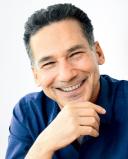Emotional Intelligence
To Better Engage Conflict: Three Ways to Disengage
In the middle of conflict, choose to stop and stop to choose.
Posted February 20, 2024 Reviewed by Lybi Ma
In one of my favorite Greek myths, the hero Hercules is walking down the road when a strange-looking beast suddenly rears its head. Hercules reacts instantly by attacking the beast with his great club. The beast looms larger, so Hercules strikes it again.
But every time Hercules hits it with his club, the beast grows bigger.
Suddenly, Hercules’ friend Athena, the goddess of wisdom, appears at his side and cries out: “Stop, Hercules, don’t you know the name of that beast?
“That beast is Strife. And the more you strike it, the larger it will grow! Cease hitting it, and it will grow smaller.”
The timely and important lesson of this myth is that the more we react to conflict, the bigger the conflict grows. Conflicts turn destructive because each side reacts in an escalating back-and-forth that all too often ends with everyone losing.
When I first came across this myth of Hercules, I found myself wishing that Athena would be there to whisper in my ear, “Stop, and choose.” Then I remembered my anthropological studies, and I realized that each of us has a personal Athena inside. In scientific terms, Athena is our prefrontal cortex, the region of the brain that inhibits rash, impulsive behavior. Personal agency and free will are our birthright as human beings. That, I believe, is the underlying message of the myth.
Choose to Stop and Stop to Choose
We humans are reaction machines. When we feel threatened, the left half of the amygdala, a little gland in the lower part of our brain, is activated. Our brain, in effect, is hijacked and taken over by our reactions. Our heart rate quickens, our blood pressure goes up, our cortisol level increases, and our sympathetic nervous system springs into action. Instantly, our bodies are primed to fight, flight, or freeze, depending on our natural proclivity and past experiences.
As I learned long ago in anthropology class, each of these reactions has an evolutionary purpose to protect us from predators and other dangers. But in the conflict situations in which we find ourselves today, these natural reactions may lead us to act in ways that are contrary to our own best interests. “Speak when you are angry and you will make the best speech you will ever regret,” is a quote I love to repeat, coined by the nineteenth-century American Civil War veteran and writer Ambrose Bierce.
It seems paradoxical, but the best way to engage is to disengage—for a moment. Start by stopping. It is counterintuitive, particularly in our world of instant communication, where quick reactions are expected. But most of the conflict situations we face call for the exact opposite. Just when (Any time?) you are tempted to react by attacking, avoiding, or appeasing, pause. Just because the other side may be trying to hook us like a fish, it doesn’t mean we have to bite.
Here are three ways to start by stopping: to disengage to better engage conflict:
1. Remember to Breathe. The quickest way to pause is very simple: remember to breathe. In tense conflict situations, I notice how often, unconsciously, I forget to breathe or take rapid, shallow breaths. Taking a couple of long deep breaths—in and out—helps calm the nervous system. Breathing decreases the level of cortisol, the stress hormone, in our bodies and lowers our heart rate and blood pressure. In short, breathing can change our state of mind.
2. Take a Moment of Silence. I also find that taking a moment of silence, even if it might feel a little awkward, can be very powerful in tense moments. This has been confirmed by my negotiation colleague Jared Curhan, who conducted a fascinating experiment on silence at MIT. He and his colleagues observed several negotiations and measured how many moments of silence there were in between all the talking. They found a significant correlation between the amount of silence and the success of the negotiations in reaching mutually satisfying outcomes. The researchers called silence the ultimate power move in negotiations.
Within that moment of silence, I notice what is going on. I observe my sensations, feelings, and thoughts. I recognize the old familiar faces of fear, anxiety, anger, and self-judgment. If I take a moment to recognize them and even name them to myself, I begin to diminish their power over me.
3. Ask Questions. Benjamin Franklin, a highly practical and scientific man, once advised, “Observe all men, thyself most.”
It takes work to observe oneself. I think of it as cultivating my inner scientist. I become an investigator and study my own sensations, emotions, and thoughts. I ask myself, what is that sour taste in my mouth? What is the queasy feeling in my gut? What is the shaky sensation in my chest? Asking questions activates the prefrontal cortex, the area of the brain that gives us choice. By recognizing my feelings and thoughts, I can put a little distance between them and me. I am no longer the feeling itself but the one experiencing the feeling. With curiosity and empathy, I have learned to befriend uncomfortable feelings that at first I tried to suppress. As I pay friendly attention, the feelings and thoughts begin to subside—and I grow more attentive and present.
Learning to observe yourself is not easy in conflict situations, but with practice, we can get better at it. These turbulent times offer us opportunities to practice every day.
Even in the most dire of conflicts, each of us can exercise our power to stop and choose. Instead of being reactive, we can be proactive. Instead of being our own worst enemy, we can become our greatest ally.
References
Curhan, J. R., Overbeck, J. R., Cho, Y., Zhang, T., & Yang, Y. (2022). Silence is golden: Extended silence, deliberative mindset, and value creation in negotiation. Journal of Applied Psychology, 107(1), 78–94.
“When a person reacts”: For further understanding of how we can help control our natural reactions, I recommend Dr. Jill Bolte Taylor’s book Whole Brain Living: The Anatomy of Choice and the Four Characters That Drive Our Life (Carlsbad, CA: Hay House, 2021.)




